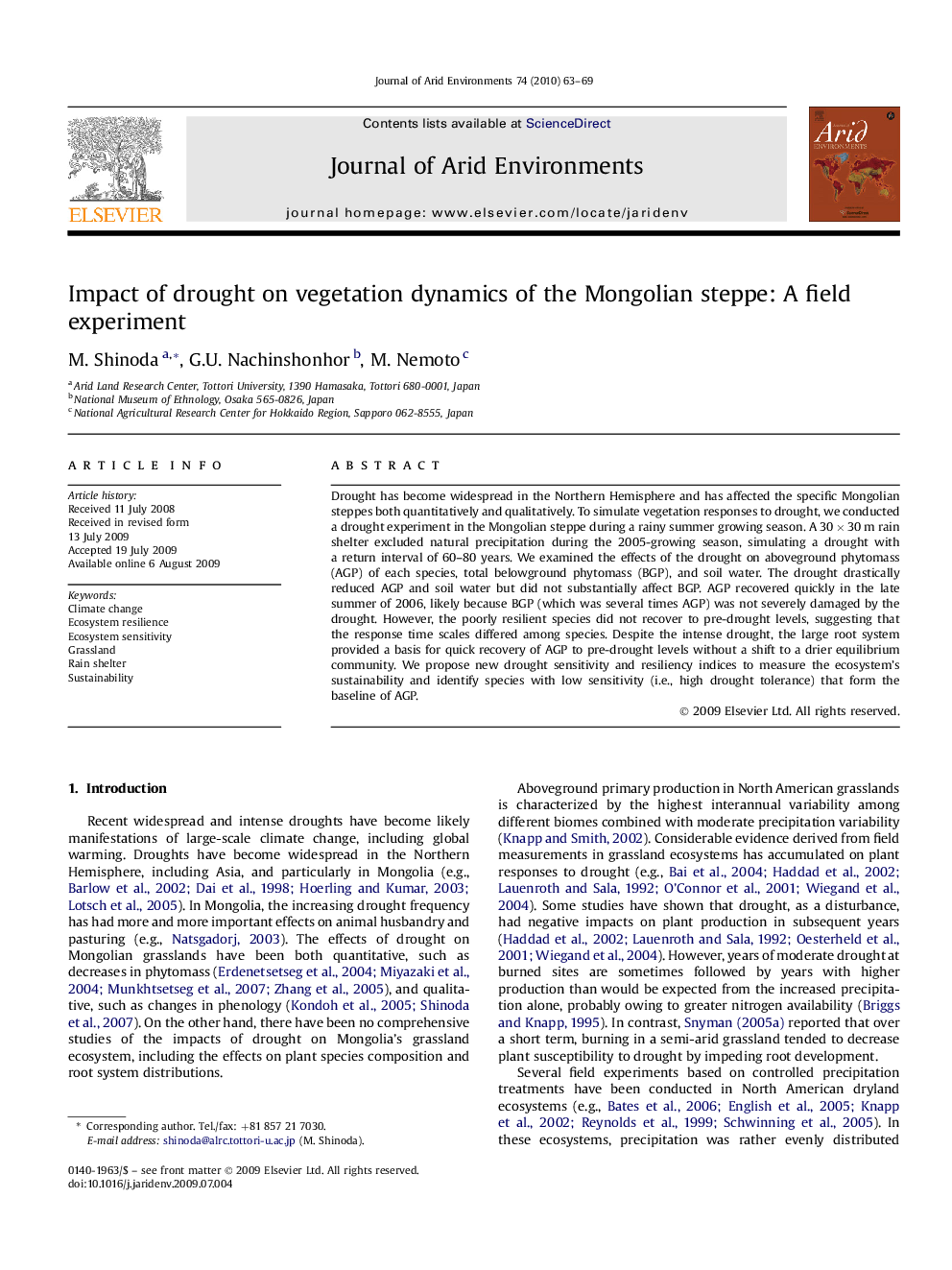| Article ID | Journal | Published Year | Pages | File Type |
|---|---|---|---|---|
| 4394341 | Journal of Arid Environments | 2010 | 7 Pages |
Drought has become widespread in the Northern Hemisphere and has affected the specific Mongolian steppes both quantitatively and qualitatively. To simulate vegetation responses to drought, we conducted a drought experiment in the Mongolian steppe during a rainy summer growing season. A 30 × 30 m rain shelter excluded natural precipitation during the 2005-growing season, simulating a drought with a return interval of 60–80 years. We examined the effects of the drought on aboveground phytomass (AGP) of each species, total belowground phytomass (BGP), and soil water. The drought drastically reduced AGP and soil water but did not substantially affect BGP. AGP recovered quickly in the late summer of 2006, likely because BGP (which was several times AGP) was not severely damaged by the drought. However, the poorly resilient species did not recover to pre-drought levels, suggesting that the response time scales differed among species. Despite the intense drought, the large root system provided a basis for quick recovery of AGP to pre-drought levels without a shift to a drier equilibrium community. We propose new drought sensitivity and resiliency indices to measure the ecosystem's sustainability and identify species with low sensitivity (i.e., high drought tolerance) that form the baseline of AGP.
